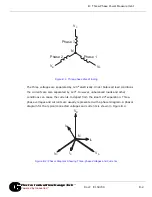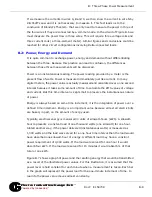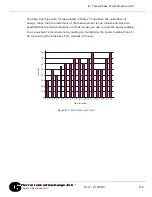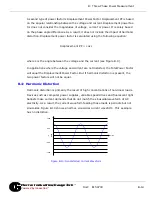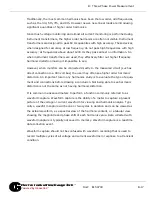
Doc
#
E159708
B-14
B: Three-Phase Power Measurement
Electro
Industries/GaugeTech
™
Powered by Innovation™
A second type of power factor is Displacement Power Factor. Displacement PF is based
on the angular relationship between the voltage and current. Displacement power fac-
tor does not consider the magnitudes of voltage, current or power. It is solely based
on the phase angle differences. As a result, it does not include the impact of harmonic
distortion. Displacement power factor is calculated using the following equation:
where
is the angle between the voltage and the current (see Figure B.9).
In applications where the voltage and current are not distorted, the Total Power Factor
will equal the Displacement Power Factor. But if harmonic distortion is present, the
two power factors will not be equal.
B.4: Harmonic Distortion
Harmonic distortion is primarily the result of high concentrations of non-linear loads.
Devices such as computer power supplies, variable speed drives and fluorescent light
ballasts make current demands that do not match the sinusoidal waveform of AC
electricity. As a result, the current waveform feeding these loads is periodic but not
sinusoidal. Figure B.10 shows a normal, sinusoidal current waveform. This example
has no distortion.
Figure B.10: Nondistorted Current Waveform
Displacement PF
cos
=
Time
Amps
– 1000
– 500
0
500
1000



